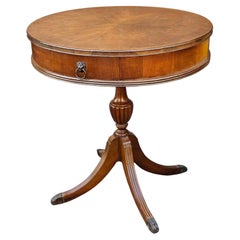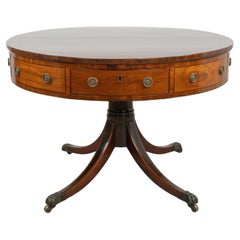Antique Drum Carder
Early 20th Century American George III Antique Drum Carder
Brass
1790s British George III Antique Drum Carder
Metal, Brass
People Also Browsed
1960s Danish Mid-Century Modern Antique Drum Carder
Bouclé, Teak
1940s French Mid-Century Modern Antique Drum Carder
Linen, Opaline Glass
Mid-19th Century English Regency Antique Drum Carder
Leather, Mahogany
19th Century English Regency Antique Drum Carder
Brass
1990s Italian Modern Antique Drum Carder
Metal
Early 1800s English Georgian Antique Drum Carder
Upholstery, Mahogany
19th Century English Rococo Antique Drum Carder
Sterling Silver
Early 20th Century Austrian Late Victorian Antique Drum Carder
Bronze
1770s English Chippendale Antique Drum Carder
Mirror, Mahogany, Giltwood
Late 20th Century French Mid-Century Modern Antique Drum Carder
Wrought Iron
Late 20th Century French Mid-Century Modern Antique Drum Carder
Wrought Iron
Early 1900s British Edwardian Antique Drum Carder
Wood
1990s Italian Mid-Century Modern Antique Drum Carder
Steel
Early 1900s British Georgian Antique Drum Carder
Wood
1880s English High Victorian Antique Drum Carder
Hardwood
1940s French Art Deco Antique Drum Carder
Bronze
Antique Drum Carder For Sale on 1stDibs
How Much is a Antique Drum Carder?
Materials: Brass Furniture
Whether burnished or lacquered, antique, new and vintage brass furniture can elevate a room.
From traditional spaces that use brass as an accent — by way of brass dining chairs or brass pendant lights — to contemporary rooms that embrace bold brass decor, there are many ways to incorporate the golden-hued metal.
“I find mixed metals to be a very updated approach, as opposed to the old days, when it was all shiny brass of dulled-out silver tones,” says interior designer Drew McGukin. “I especially love working with brass and blackened steel for added warmth and tonality. To me, aged brass is complementary across many design styles and can trend contemporary or traditional when pushed either way.”
He proves his point in a San Francisco entryway, where a Lindsey Adelman light fixture hangs above a limited-edition table and stools by Kelly Wearstler — also an enthusiast of juxtapositions — all providing bronze accents. The walls were hand-painted by artist Caroline Lizarraga and the ombré stair runner is by DMc.
West Coast designer Catherine Kwong chose a sleek brass and lacquered-parchment credenza by Scala Luxury to fit this San Francisco apartment. “The design of this sideboard is reminiscent of work by French modernist Jean Prouvé. The brass font imbues the space with warmth and the round ‘portholes’ provide an arresting geometric element.”
Find antique, new and vintage brass tables, case pieces and other furnishings now on 1stDibs.
Finding the Right Card-tables-tea-tables for You
Today, the phrase “card tables” might evoke the image of common plastic tables covered in felt, but historically these tables were statement pieces that invited merriment and were made of mahogany, walnut or other fine woods. Today, antique and vintage card tables and tea tables can enliven a space and encourage spirited competition in your home.
Card tables originated in England in the late 17th century, and during this time, as well as the 18th century, game tables in general became quite popular. We refer to early versions of card tables as antique Regency card tables because the Prince of Wales ruled England during the period and his official title was Regent. Back then, these furnishings were typically small, rectangular tables outfitted with hinged tops so that they could be opened to reveal a playing surface. Ornamental flourishes of the era might have included an integration of fine velvet or needlepoint as lining for the table’s surface. For furniture makers, wide adoption of a dense woven green material called baize for table covering — similar to felt but stronger — occurred during the early 1700s.
Tea became widely affordable during the early 1800s in England, and tea time exploded in popularity and involved large tea sets — especially during the Victorian era — as well as small, well-crafted tea tables. Your beverage was paired with petite baked goods, and the tea table would be home to teacups, saucers, a milk pot and other items. While tea tables are similar in design to card tables, the focus is more on presentation. Georgian card tables and tea tables — furniture made during the reign of England’s three Georges — were especially ornate. Some featured intricately carved design elements on each side and stood on elegantly curved legs. After all, tea time became a sacred ritual that society women dressed up for. It was a time to pause, reflect and sip a comforting beverage.
When no guests were visiting to enjoy tea or play games, owners could fold down both card tables and tea tables to their smaller size and tuck them away into a corner of the room.
Antique and vintage card tables and tea tables can make a lovely addition to any living room, entertainment room or game room. Find yours on 1stDibs.

